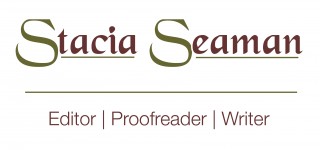There’s been some interesting discussion recently involving the visibility of women in sff. In light of this, I decided to take a look at my own reading habits. I went over the list of books I’ve read in the past few years and created two lists: male authors and female authors. Then I counted the number of sff books in each of those lists.
Books read: 225
Women: 135 (60%)
Men: 90 (40%)
I was a bit surprised that the majority of books were written by women. A number of authors had ambiguous names, and when I researched them I discovered about 15 books that I’d put in the “written by men” list had to be shifted to the “written by women” list, while only 1 went the other way. None were sff, all were mysteries or thrillers, but I still found it interesting that my default assumption was “man.”
SFF: 67 books
Women: 52 (78%)
Men: 15 (22%)
This is where things got interesting. I used an extremely loose definition of sff, so this includes everything from high fantasy to hard sf to YA dystopian to urban fantasy to very real world but with that one twist that is otherworldly. If I used a stricter definition of sff (for example, excluded paranormal romance), the ratio would change dramatically (57% women/43% men).
Another factor is that I read a lot of series, and if the first book pulls me in, I’m one of those readers who will finish a series unless it gets so bad it’s unreadable. So that’s another reason the ratio of female to male sff writers is so high: in the past couple of years I’ve read the Hunger Games trilogy, the Vampire Academy books, the Earthsea books (again—I can’t go more than five years without re-reading these), and a couple of other ongoing series, and they’re all written by women. I’m also reading the Dresden Files books by Jim Butcher, but for the most part the male-authored sff on my list is stand-alone novels. And, taking a look at my to-read list, I notice that I consistently put off reading a number of male-authored sff books that are HUGE (Neal Stephenson being a prime example) in favor of the shorter female-authored sff books.
SF books: 30% of total books read
Women: 39% of books by women were sff
Men: 17% of books by men were sff
This was another set of numbers that interested me. It would seem that I read a lot of mysteries and thrillers, and probably about 60% of the male-authored books fell into that category (Scandinavian crime fiction alone made up 25%) . Most of the nonfiction I’ve read was written by male authors. The single most interesting thing, at least to me, was that while the male-authored books usually fell into a single broad category (sff; mystery/thriller; romance; nonfiction), the female-author books were much harder to pin down. There was a lot of crossover between sff and romance (especially urban romance and paranormal romance); mystery/thriller and romance (the female-authored books were more likely to have a strong romantic component than the male-authored books); and YA novels crossing over with everything (again, higher likelihood of a romantic component with female-authored than male-authored books).
I think there is the perception that paranormal/urban fantasy is more likely to appeal to romance readers than to sff readers, so even though there’s tons of paranormal romance out there, and much of it is being written by women, it’s primarily categorized as a romance subgenre or YA for teen girls rather than sff. I know I hesitated to add those books to my sff list. Back when vampires and shapeshifters were by definition scary or alien or both, it was easy to classify them as horror or sff. But now, when they’re sexy and tormented and wanting to be a part of mainstream society, it’s a lot harder to categorize these books. However, that really only applies to the last couple of decades because it’s a relatively new subgenre. It can’t explain the wider overall bias against women in discussions of sff writing.

Talk to me!